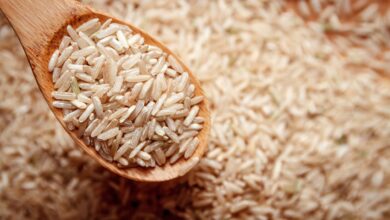Yoga for depression: How to fight sadness naturally?

If you are going through a bad period or one of your loved ones is in crisis … If you are wondering if it is a simple difficult moment or real depression … This is the article for you! You can’t help it. Sooner or later, everyone goes through moments in life when sadness takes over. The only thing you can do is know this problem and react in the best possible way.
The reaction in these cases is of fundamental importance because, if you know what to do, the depression can disappear in a short time. Otherwise, it can also last for long periods. In this article, you will find out what depression is, how it manifests itself, how yoga can help you overcome it, and what are other natural remedies can help you when you are feeling particularly sad.
Why Yoga for depression?

Stress has been found to play an important role in the onset of this disease, and yoga has the characteristic of easing body and mind tension.
To use scientific terms, those with depression subconsciously put pressure on their sympathetic nervous system, thus producing high amounts of cortisol. It is a hormone produced by the adrenal glands that, in case of overproduction, can be lowered both with antidepressant drugs and with a constant practice of yoga.
Here they divided people with depressive syndrome into two groups: one group practiced yoga daily and the other took an antidepressant drug (imipramine). The result?
After only three months, the yoga group had the first great benefits and after six months, the problem was significantly reduced.
These studies are very interesting because they confirm that each person possesses an inner strength and incredible personal resources that help overcome most of the mood disorders.
These are innate inner resources, but they must be stimulated and solicited in the appropriate way and this is where yoga comes into play.
Unfortunately, the society in which we live does not adequately teach us to trust in our possibilities, but rather, too often, it makes us believe that we are pawns in the hands of destiny.
“In the west, it is believed that the mind of man is nothing but a receiving station subjected to the stimuli of the stimuli coming from the outside world. For yoga science, man is also a transmitting device […] he has the power within himself to radiate outside of himself.”
According to yoga, man also has the power to control the mind, that is, to be able to choose the type of experience he wishes to receive from the universe. All our experiences, both negative and positive, leave us something. They teach us something.
We need to put ourselves in the perspective of wanting to draw the best part from what happens to us and let go of the darkest part, even from the most terrible things … I know it’s difficult!
Yoga practices against depression
Here is a series of asanas to perform daily. As always, they are simple positions, which take no more than 20 minutes. I recommend that you do yoga in the morning as soon as you wake up to start off on the right foot.
Adho mukha svanasana, the downward-facing dog
Start in the cat position, on all fours with the shoulders above the wrists and the pelvis above the knees. As you exhale, press your hands to the ground and straighten your legs, bringing your buttocks to the sky. At this point, try to relax your back and bring all your weight back. If you can, bring your heels to the ground. Otherwise, keep them raised.
Paschimottanasana , the position of the forceps
Start from dandasana, the position of the stick that is sitting with the legs extended frontally and the torso erect. Inhaling, stretch your hands upwards, and on the next exhalation, bend forward. If you can grab your toes with your hands, otherwise place them on your shins or ankles.
Once in the position, take a deep breath and try to reach forward, not down. Bending is only a consequence of a correct forward stretch.
Halasana, the position of the plow
Once out of paschimottanasana, roll onto your back and bring your feet over your head, straighten your legs and bring your buttocks to the sky. The hands instead go to the opposite side of the legs and the fingers intertwine. In this position, it is important to keep the chest open and to avoid tension in the shoulder area.
To facilitate the position, you can put a folded mat under the shoulders in order to make the bending to which the neck is subjected less intense.
Ananda balasana, the position of the happy child
At this point, rest your back on the ground, bring your knees to your chest and grab your feet with your hands. This position is called the happy child because it is very often taken by children when they play carefree.
Stay in this position for 20 deep breaths and try to remember when you were a child and played happily, without thoughts.
Savasana, the position of the corpse
Finally, lie down on the ground and let the legs relax outwards. The hands are turned towards the sky and relax completely for 5 minutes in the final relaxation.
If you want to deepen your knowledge of the positions, I suggest you take a look at yogasana, the guide to the basic positions of yoga, thanks to which you will learn the execution, the simplified variations, the benefits, and much more on the basic positions of yoga. If, on the other hand, you want to start doing yoga, or you are a beginner, take a look at easy yoga, the guide to starting yoga in a simple and effective way.
Food that makes you happy
Nutrition plays an important role in maintaining the general psychophysical well-being of the person. In the specific case of mood disorders and depressions, its role becomes fundamental since there are foods that have incredible properties and counteract those moods that make you feel grounded.
Below you will find a list of the main foods that we could trivially define as “Producers of happiness,” from the best known to the most unsuspected … Let’s find them all!
Cocoa
Among the most well-known, it is highly energetic and nutritious. Contains fats, proteins, and minerals. Thanks to theobromine (a substance similar to caffeine), it has a beneficial, stimulating effect on the central nervous system.
Fruit
Fruit, whether dried or fresh, always does great good. It is one of the most vitamin-rich food groups ever, essential for various body functions, including stimulation of the nervous system. It is also rich in mineral salts, especially potassium, which helps the muscles.
Legumes
From lentils to beans to peas to soy etc., they are all rich in nutrients, especially proteins. They rank first as energy foods.
Spinach
All green vegetables are fine, but spinach contains 2 times more iron than others. They also contain b vitamins, mineral salts including phosphorus useful for bones, manganese against aging, and potassium for muscles.
Yogurt
Its lactic ferments contribute to the formation of the usual b vitamins, which balance the nervous system and also for the proper functioning of the liver. Furthermore, we also find here mineral salts, especially calcium. Eating a yogurt a day increases the body’s immune defenses against viruses and seasonal ailments.
Final words,
It is really the disease of our time and the first difficulty lies in recognizing and admitting it in order to then be able to defeat it. I tried to explain in an exhaustive way what it is and how to diagnose it. I have illustrated a sequence of asanas that will surely help you, such as attention to the diet to follow.




